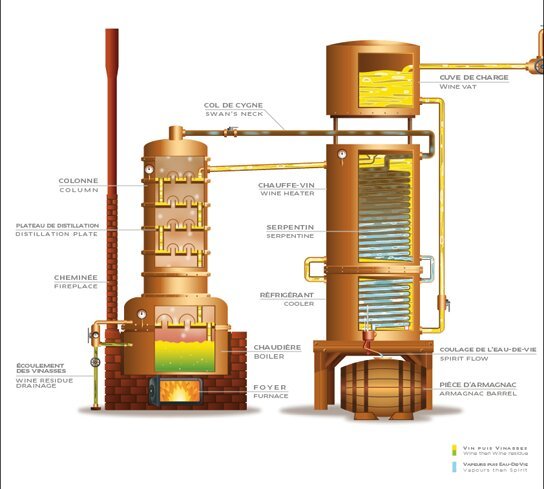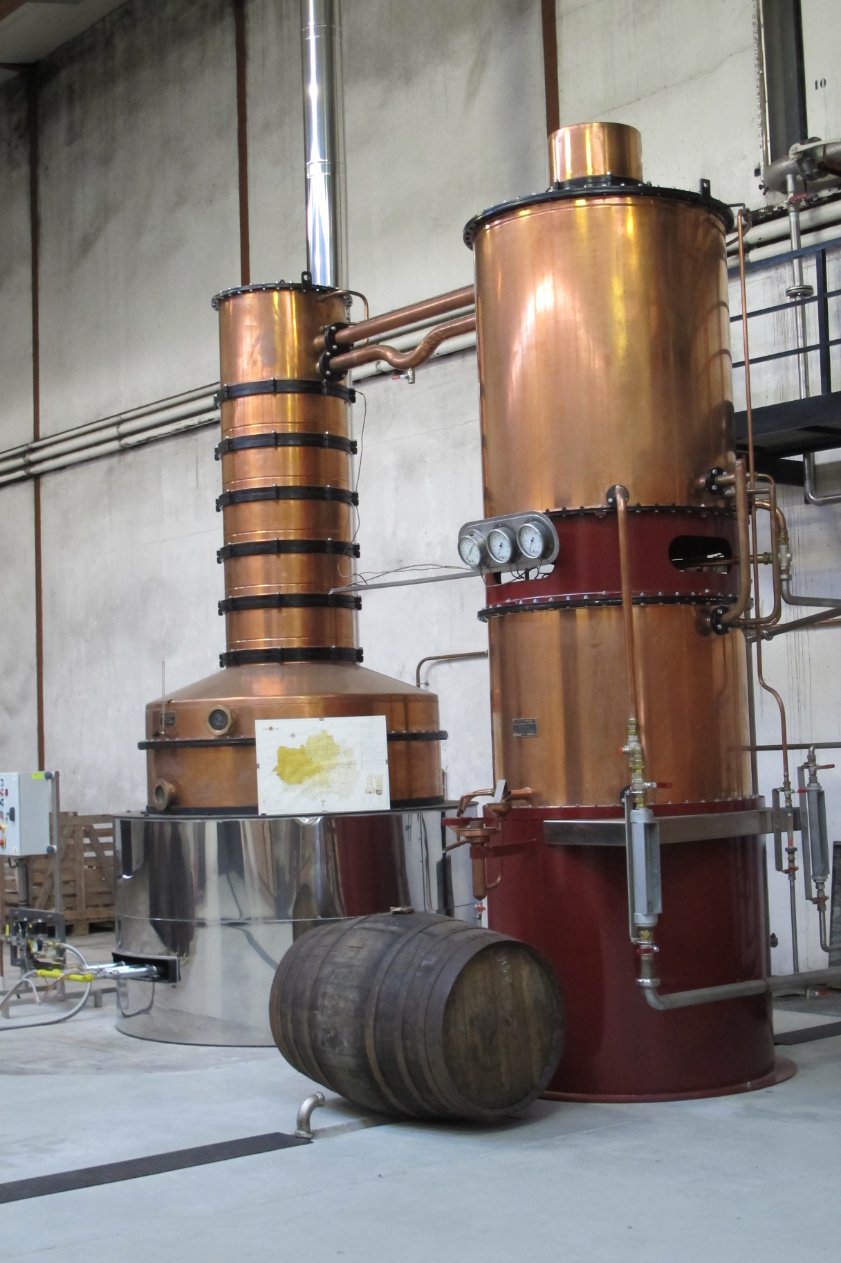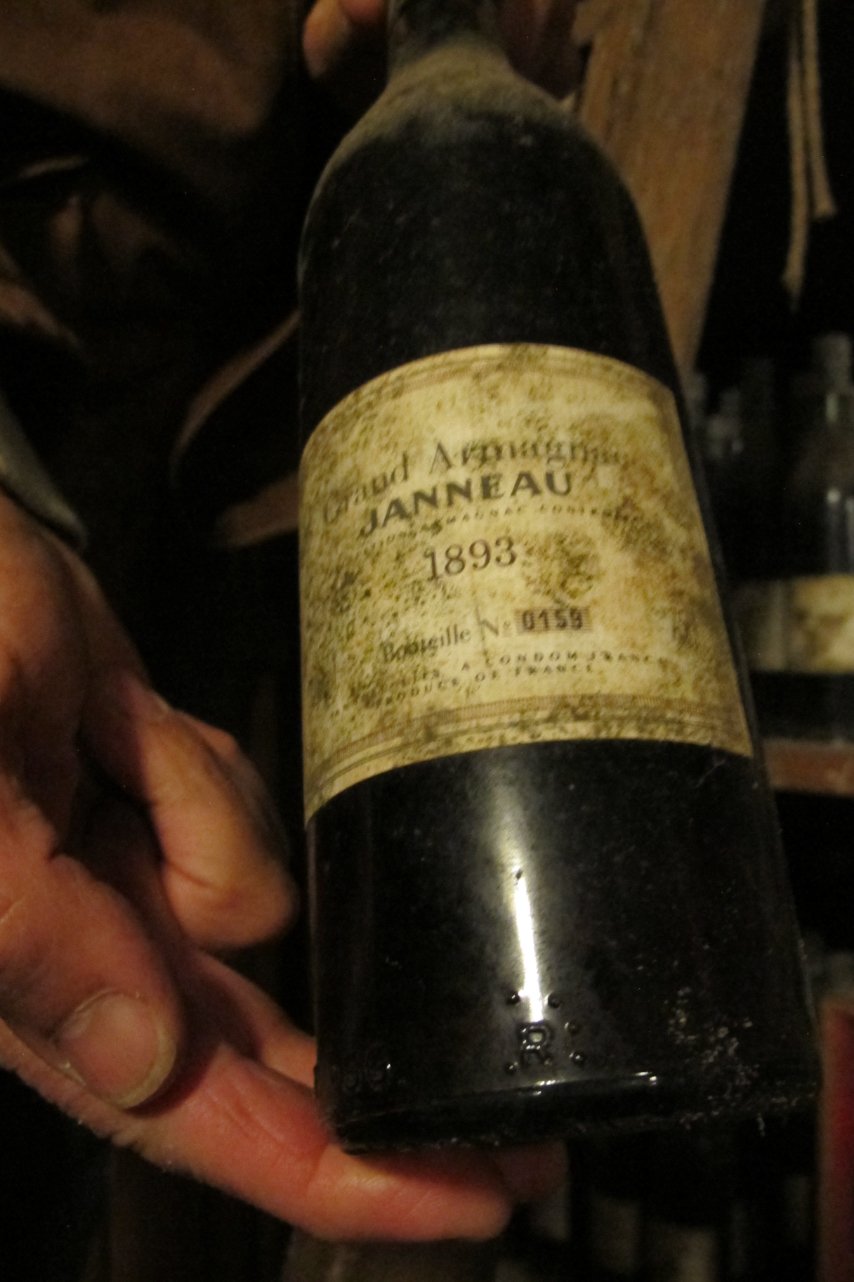Armagnac is a French grape brandy most similar to cognac, but ultimately very different in production and flavor profile.
In this post I'll cover the basics of armagnac. In the next post, I'll discuss the main differences between cognac and armagnac.
Armagnac History
- Vines were introduced by the Romans circa 50 BC
- The oldest document of armagnac production is from 1310, making armagnac over 700 years old and 150 years older than cognac.
- In 1879, phylloxera hit the region and destroyed half the vineyards. It wasn't worse because the Bas Armagnac region has sandy soils and the phylloxera mites didn't thrive in it.
- 1936 the AOC was created and in 1941 the BNIA, the Armagnac Bureau, was created.
- In 2005, armagnac laws changed to allow blanche de armagnac – unaged armagnac
Armagnac Region
Armagnac is produced in the Gascony region of France, south of Cognac and more inland. They produce a lot of wonderful delicacies in the region and also foie gras that is the product of animal torture. In addition to grapes, they grow a lot of corn, which is used to force feed ducks.
The region has its own microclimate with the Pyranees mountains on one side and pine forests on the other to block winds.

There are three terroirs/appellations in the region. These are often found on the bottle labels. Hardly any armagnac is produced in the Haut Armagnac – only 1%.
- Bas-Armagnac
- Tenareze
- Haut-Armagnac

Ten grape varietals are allowed to be used in armagnac, but in reality people only use the first four:
- Ugni Blanc 55%
- Baco (aka Baco 22A) 35%
- Folle Blanche 5%
- Colombard 5%
- Plant de Graisse
- Meslier St François
- Clairette de Gascogne
- Jurançon blanc
- Mauzac Blanc
- Mauzac Rosé
Baco is a hybrid grape and was going to be disallowed in armagnac (I believe this was due to an EU law), but they decided it would be allowed only for distillation, not table wine so it remains.
Folle Blanche was the main pre-phylloxera grape.

Distillation and Aging
Grapes are harvested in the fall and the wine is distilled throughout the winter. All distillation must be finished by March 31.
As with cognac, the ideal grapes are low in alcohol and high in acid so that their flavors will compound through distillation and the wine is less likely to spoil in the weeks or months between harvest and distillation. (No sulfur is added to preserve the wine.)
The wine is distilled on the lees, but only on the fine lees so it doesn't gunk up the stills.
95% of armagnac is distilled in an Alambic Armagnacais, a small, sometimes mobile, continuous column still. The mobile stills have names, and producers will request the same stills each year. 25% of stills are wood-fired; the rest are gas.
The rest is distilled in pot stills, usually the typical cognac stills. Only 3 producers use pot stills.

This video does a good job at showing how armagnac flows through the continuous still. The good stuff begins at 1:30.
The plates inside the stills have what the bourbon distillers call "bubble caps" in different shapes – spiders, mushrooms, centipedes, or little houses.
In the continuous still, the vapor and wine are in contact with each other. This isn't the case in pot stills. There are no heads and tails cuts in continuous stills.
The maximum number of plates allowed by law is 15. Some distillers use as few as 3 plates, but the average is probably 5-8 plates.
Aging Armagnac
Armagnac is aged in large 400 liter French oak barrels. Many barrels are made from the local Gascon oak aka Black Oak. This wood has wide grains and most of it is given a medium-heavy toast.
Limousin and other French oak barrels with narrow grains are also used. I'm not sure of the ratio of local to non-local barrels.

As with cognac, armagnac typically goes into new barrels for 6 months to 2 years of its life, then is transferred to used/older barrels so that the wood won't dominate the flavor.
Armagnac producers make a point of aerating their brandy while it ages, typically when mixing a bunch of barrels together and redistributing it. Typically when they move the brandy around in the aging warehouses they don't roll barrels – they pump out the brandy and pump it into other barrels.
Different grape varietals are often aged separately.

Minimum Aging Laws for Armagnac
- VS: 1 year
- VSOP: 4 years
- NAPOLEON: 6 years
- XO: 6 years
- 20 years 20 years
- Vintage: Single Harvest from the year on the label (minimum 10 years old)
Blanche de armagnac is unaged armagnac, but it is rested a minimum of three months in non-reactive containers, typically stainless steel. Once a batch has been declared that it will be blanche de armagnac, if it sits in tanks but doesn't sell they're not allowed to then age it in wood.
In fact this is the same with all armagnac: for each season the growers must declare which parcels will be for wine, blanche de armagnac, and armagnac.
Additives in Armagnac
Typical additives in armagnac include coloring caramel (8-10 g/l is typical), sugar, and boise. The latter is wood flavoring to immitate age. The BNIA says it's not commonly used in armagnac, but they would.
Those three additives combine to form the "obscuration rate." A company can measure the "gross" ABV, which is the number that goes on the bottle as measured by a hydrometer. The "real" ABV is measured in a laboratory, usually by redistillation. The difference between the "real" and "gross" ABV must be less than 4%. So rather than having a legal limit on sugar or caramel or boise, they have a limit on the total additives using the obscuration rate measurement. The BNIA representatives says it's rare that the obscuration rate is more than 2%.

Learn more about armagnac from the BNIA's website.
In the next post, we'll cover the difference between cognac and armagnac.


































